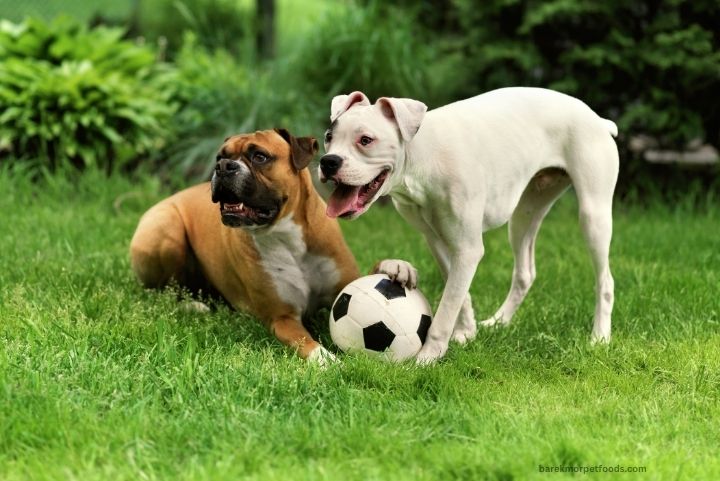Navigating Dog Introductions: A Guide to Safe and Successful Encounters

How to Safely Introduce Your Dog to Other Dogs: A Step-by-Step Guide
As a devoted pet owner, you know the joy of seeing your dog interact with other canines. However, these introductions can be tricky, and it’s important to approach them with patience and awareness to ensure a positive experience. In this blog, we'll cover everything from understanding canine body language to executing the perfect introduction, giving you the tools to help your dog build healthy relationships with other dogs.
Understanding Canine Body Language
A successful dog introduction begins with a keen understanding of canine body language. Dogs communicate largely through their posture, movements, and facial expressions. When observing two dogs meeting, look for signs of stress or relaxation.
- Signs of stress: A tense body, raised hackles, a tucked tail, or growling.
- Signs of relaxation: A wagging tail, playful movements, or a loose body posture.
Understanding these cues allows you to assess the interaction and prevent conflict before it starts.
Recognizing Dominant and Submissive Behaviours
Understanding the dominant and submissive behaviours in dogs is key to facilitating a successful interaction. Dogs often communicate their status in the social hierarchy through their body language:
- Dominant behaviours: Standing over another dog, staring directly into their eyes, or blocking their movement. These can be perceived as challenges.
- Submissive behaviours: Lowering the head, avoiding eye contact, or rolling onto their back. These gestures indicate that the dog is willing to defer to the other dog.
By recognizing these behaviours, you can guide the interaction and prevent tension or aggressive behaviour.
Preparing for the Introduction
Before introducing your dog to another, make sure both dogs are ready. If possible, exercise your dog beforehand to ensure they are calm and not overly excitable. The energy levels of both dogs should ideally match, so choose a dog that has a similar temperament to your own.
Choosing the Right Location for the Introduction
The location of the dog introduction plays a significant role in its success. Choose a neutral location where neither dog feels territorial, such as a park or an open space. Avoid areas with heavy foot traffic or other distractions, as these can increase anxiety and make it harder to control the dogs’ interactions.
Executing the Introduction: Step-by-Step
When it’s time to introduce the dogs, approach the situation calmly and patiently. Here’s how to proceed:
- Allow them to sniff each other: Let the dogs greet one another at their own pace. Avoid forcing direct interaction or making them face each other head-on, as this can be perceived as threatening.
- Observe body language: Watch for signs of stress or aggression, and be ready to step in if necessary. A tense or stiff posture is a clear sign that the interaction should be halted.
Maintaining Control During the Introduction
It’s essential to keep both dogs on a leash during the introduction. This ensures you have control over the interaction and can safely separate them if needed. Avoid letting the dogs get too close initially, as this can cause unnecessary tension. Instead, encourage side-to-side greetings, which are less confrontational.
Reinforcing Positive Interactions
Once the dogs are comfortably interacting, reinforce positive behaviour by offering treats and praise. If the initial introduction goes well, continue to supervise their playtime, gradually increasing the duration and intensity of their interactions. This helps them build confidence and fosters a sense of trust.
Addressing Challenges During Dog Introductions
Not every introduction will go smoothly, and it’s important to be prepared for challenges. If your dogs show signs of aggression or discomfort, calmly separate them and give them space. It’s important to stay patient and try again at a later time. For persistent issues, consider consulting with a professional dog trainer who can offer tailored advice.
Helpful Tips for Successful Dog Introductions
- Start with a brief, controlled introduction: Gradually increase the time and intensity of the interaction as the dogs become more comfortable.
- Avoid direct eye contact and standing over the other dog, as these can be perceived as threatening.
- Use high-value treats: Reward calm, positive interactions to reinforce good behaviour.
- If necessary, separate the dogs: If the interaction is not going well, calmly remove them and try again another day.
- Consult a professional trainer: If issues persist, seek help from a certified trainer or behaviourist for guidance.
Introducing your dog to other dogs can be a rewarding experience when approached with patience, understanding, and proper guidance. By observing canine body language, identifying dominant and submissive behaviours, and following the strategies in this guide, you can facilitate safe, enjoyable encounters. With the right approach, you’ll help your dog build strong social relationships that enhance their well-being and happiness.
Remember, every dog is unique, so take your time and always prioritize your pet’s comfort. With the support of Barekmor® Pet Foods, which offers premium, hypoallergenic, and grain-free dog food, you can ensure your dog is well-nourished and ready for all their social adventures.






